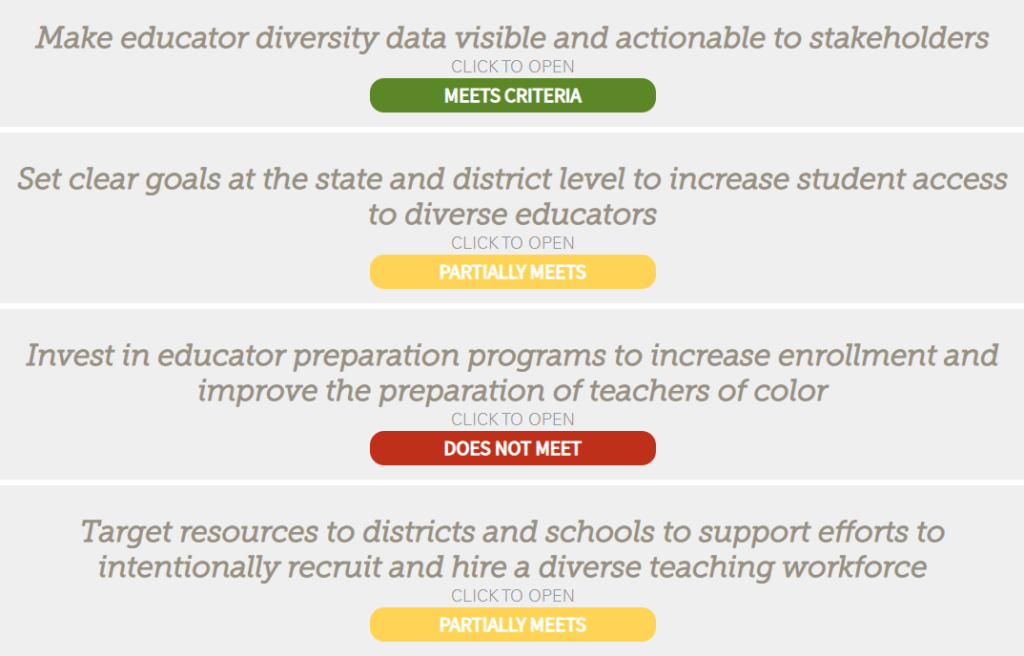How Delaware is Prioritizing Teacher Diversity

The notion that a more diverse teacher workforce increases student wellbeing and academic success is not a new idea. Research has shown that a more diverse teacher workforce leads to better student outcomes, increases access to advanced coursework, and builds strong social-emotional support for students. Yet, across Delaware and the nation, teaching staffs rarely look like the students they serve.
In Delaware, 56 percent of our students identify as students of color, while only 17 percent of our workforce are teachers of color. More striking is that we are not retaining our teachers of color at the same rate as white teachers, with only 50 percent staying in their same school after two years and only 70 percent staying in the state.
The Education Trust recently released a new 50-state report card on teacher diversity policy that reinforces the hard work ahead to improve upon these numbers. Overall, the diversity report shows a mixed bag for Delaware. While it highlights some areas of success for our state—such as transparency in data reporting and investments to retain teachers—there is still much to be done. Clearly, we need more investments that target increased recruitment, training, and hiring of teachers of color

At Rodel, we are working with a committed group of partners representing 20 percent of the students and teachers in the state on the hard work to address these areas of need. Over the next two years our goal is to increase the number of teacher residents across the state from 47 to 75; increase the diversity of our first-year teachers from 34 percent teachers of color today to 40 percent in 2022; and increase the percentage of teachers of color who stay in the profession after two years from 78 percent today to 82 percent in 2022.
To achieve these goals we are working in three critical areas:
- Increasing the reach and sustainability of residency programs in the state through investments in new programs at places like Delaware State University and working with our partners to improve the recruitment, selection, and support of mentor teachers that work directly in coaching and feedback of residents.
- Improving the structures and supports for our current high school Teacher Academies by working to create networking communities for students interested in pursuing teachers, and partnering with the Department of Education to improve marketing materials on becoming a teacher in Delaware.
- Creating programs with our partners to create better systems to sustain and support current and perspective teachers of color through the creation of “Grow Your Own” programs and affinity groups within districts and higher education.
Delaware may yet become a national leader when it comes to teacher diversity, but for now, we can celebrate some modest acclaim while acknowledging our collective work ahead.
Related Topics: Delaware education, delaware schools, Delaware State University, teacher diversity, teacher prep